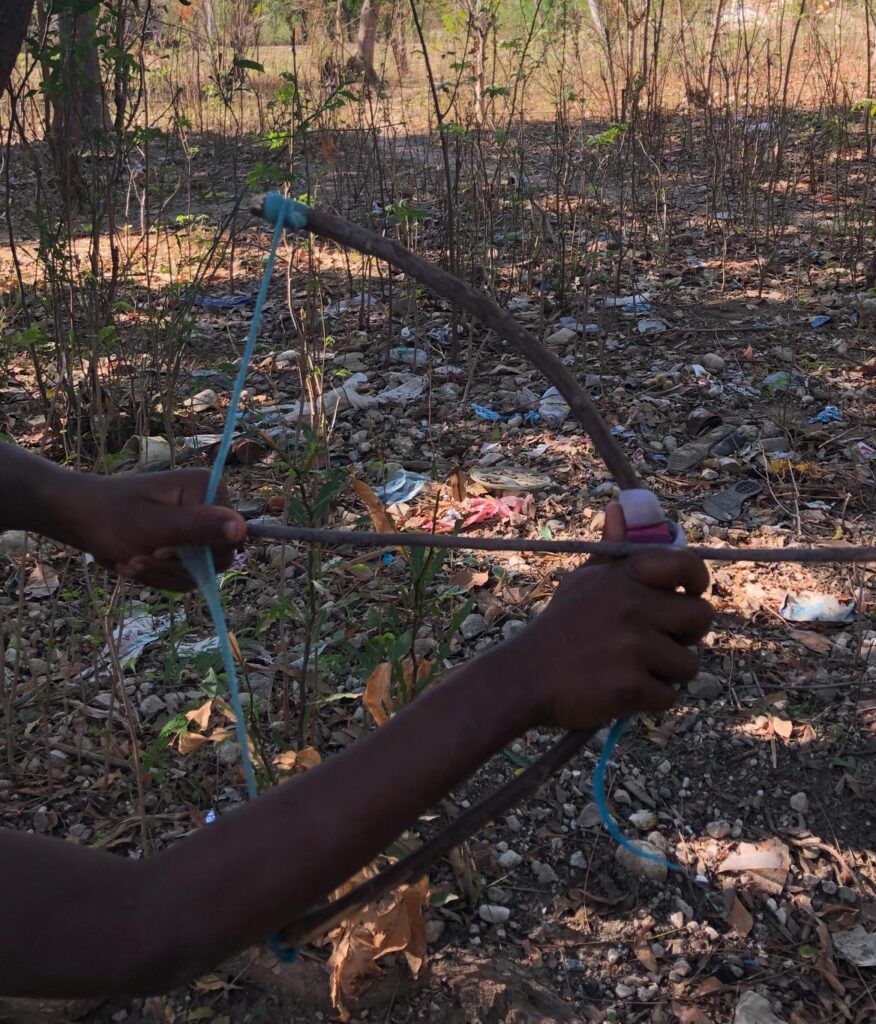In Haiti, the creativity and resourcefulness of children shine through in the way they make their own toys from the simplest of materials. In a country where store-bought toys are often a luxury, children in rural areas like Cazale have become experts at turning everyday objects, often discarded by others, into fun and imaginative playthings.
It’s amazing to see how something as simple as an old soda bottle, a piece of wire, or a worn-out tire can be transformed into a source of endless entertainment. Old bottle caps become wheels for makeshift cars, while bits of wood and string are used to create intricate kites that soar above the mountains. Even discarded plastic containers are repurposed into dolls, trucks, or musical instruments, proving that with a bit of imagination, anything can become a toy.
One of the most common homemade toys is the “ti machinn” or little car, which boys often make from empty cans, plastic bottles, or pieces of wood. They carefully attach bottle caps as wheels, and some even get creative with the steering, adding sticks to guide their mini vehicles as they race them through the dusty paths of their villages. These toy cars are cherished, not only because they’re fun to play with but also because they represent the hard work and ingenuity that went into building them.
Girls often make dolls from scraps of fabric, using old socks, or creating pretend kitchens with pieces of broken pottery or tin cans. These toys may be simple, but they bring immense joy and allow the children to engage in imaginative play, just like any child with more expensive, store-bought toys.
The way Haitian children turn waste into playthings is a beautiful reminder of their resilience and creativity. In a world where material possessions are sometimes scarce, these kids show us that joy and innovation are abundant. The toys they make aren’t just objects for entertainment; they’re symbols of their ability to create something meaningful out of nothing.



These homemade toys serve as a reflection of the resourcefulness ingrained in Haitian culture, where every piece of material has potential. It’s a testament to the spirit of the children, who make the best of what they have, crafting their own fun and filling their days with play, laughter, and endless imagination.



